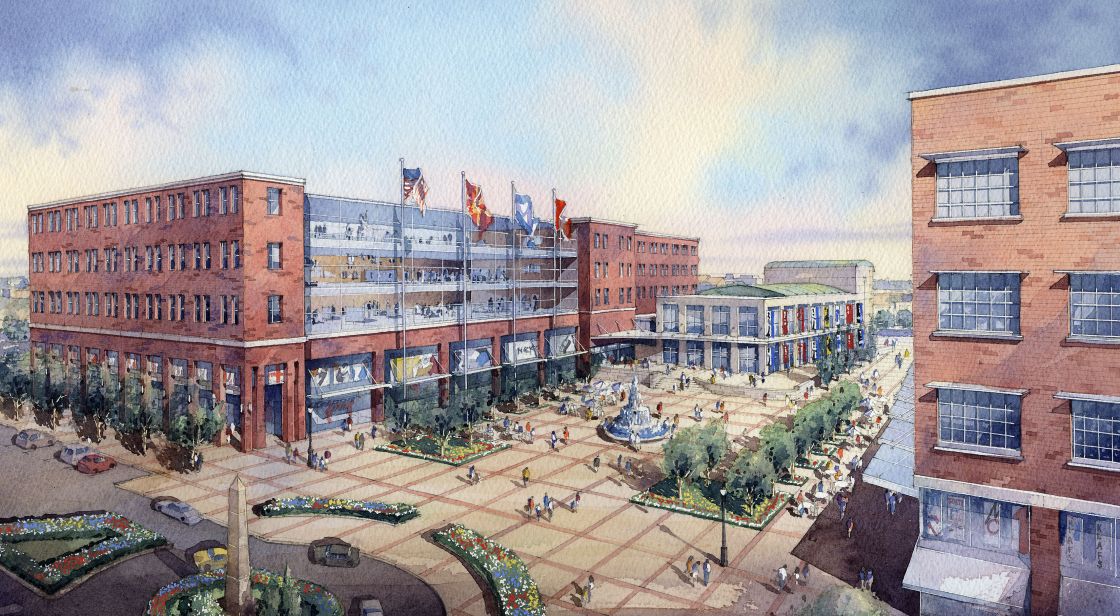To build a successful learning environment, you must first build a community—a safe, interactive place where students, teachers, and parents can own full membership and participation. As new urbanist philosophies reshape our cities creating walkable, mixed-use streetscapes, housing now plays an even more critical role in shaping community and in turn the learning environment.
From a basic psychological level we know that if our basic needs are met (food, shelter); if we are safe; if we have human interaction, belongingness and love; then we feel confident, are open to learning and are motivated to participate fully in our community. Across the urban landscape, the combination of living and learning environments—whether as part of a commercial development or college or university project—can have a marked impact.
In Newark, New Jersey, Teachers Village—an innovative mixed use development transforming 12 city blocks with schools, retail and housing for teachers—is set to do just that. Led by developer RBH Group, the multi-faceted project includes eight buildings designed by both KSS Architects and Richard Meier & Partners. In all, three charter schools and an early childhood education center will call the development home above ground-floor retail. But what sets the development apart is the introduction of a high-rise residential tower with more than 200 units of market-rate apartments first offered for lease to teachers at affordable rates.
The idea to incorporate teachers came after the developers realized many of the city’s current educators worked long hours and lived far away. In an RBH Group survey, researchers found that just 19 percent of Newark teachers live in the city proper, with 29 percent living in the New Jersey suburbs, 19 percent in New York City, and 10 percent in Jersey City. By living closer, teachers could bring energy and ideas to the neighborhoods where they work—attracting more business while creating a safe and vibrant community ripe for education and exchange.
Newark is not the first city to experiment with workforce housing for teachers. Baltimore’s Miller’s Court includes 40 teacher apartments, the majority of which are rented by Teach for America participants. In Los Angeles, the Glassell Park complex combines a district pre-school with affordable housing for teachers and others. In Jersey City, New Jersey City University (NJCU) is taking the lead on a project that mixes housing for faculty, students, local teachers and residents to revitalize a community and energize a new academic environment.
With a commitment to improving its surrounding urban region and beyond, NJCU’s West Campus will transform what is now a vacant steel manufacturing site into a six-block neighborhood that combines academic, retail and office space, restaurants, cafes, a supermarket, bookstore, daycare and theater. Phase I is already complete and brought a charter high school, business incubator and black box theater to a property adjacent to the main West Campus site. Phase II, the student housing component, is now moving forward.
Why did NJCU take such an inclusive approach to its master plan for the West Campus? Rather than create a one-dimensional academic environment, the University proactively sought to find a way to revitalize the entire neighborhood—in turn creating an active and energized learning environment. With faculty and students living, working and learning together, there is greater opportunity for the exchange of ideas and interaction outside the classroom. Add in teachers from the nearby charter school and young couples and families looking for new living options in close proximity to New York City, and the Campus becomes a vibrant community—a place where everyone feels safe, connected, engaged and open to learning.

